Clay court

A clay court is one of the four different types of tennis court. Clay courts are made of crushed shale, stone or brick. The red clay is slower than the green, or Har-Tru "American" clay. The French Open uses clay courts, making it unique among the Grand Slam tournaments.
Clay courts are more common in Continental Europe and Latin America than in the United States, Canada or Britain. In the United States, courts made of green clay, also known as "rubico", are often called "clay", but are not made of the same clay used in most European and Latin American countries. Although cheaper to construct than other types of tennis courts, the maintenance costs of clay are high as the surface must be rolled to preserve flatness. The water content must also be balanced; green courts are often sloped in order to allow water run-off.[1]
Contents |
Play
Clay courts favour the "full western grip" for more topspin. Clay courters generally play in a semi circle about 5 to 10 feet behind the baseline.
Clay courts are considered "slow", because the balls bounce relatively high and more slowly, making it more difficult for a player to hit an unreturnable shot. Points are usually longer as there are fewer winners. Therefore, clay courts heavily favour baseliners who are consistent and are generally more defensive, which has allowed players such as Rafael Nadal, Björn Borg and Justine Henin to find success at the French Open. However, offensive baseliners with powerful groundstrokes have also found success on clay. This is especially true for taller players because the higher bounces land in their hitting zones, which has allowed women players such as Ana Ivanović, Jelena Janković and Dinara Safina to have success on clay courts.
Clay court players use topspins to throw off their opponents. Movement on gravel courts is very different from movement on any other surface. Playing on clay often involves the ability to slide into the ball during the stroke, as opposed to running and stopping like on a hard or grass court. Players who excel on clay courts but struggle to replicate the same form on fast courts are known as clay-court specialists.
Clay courts are unique in that the ball bounce leaves an impression in the ground, which can help determine whether a shot was in or out. Critics of red clay courts point to the constant need to wet them down, problems renewing the surface if it dries out, and the damage caused to clothing and footwear through stains.
Types of clay
There are three different types of clay:
Red clay
Almost all red "clay" courts are made not of natural clay but of crushed brick that is packed to make the court. The crushed brick is then covered with a topping of other crushed particles. This type of surface does not absorb water easily and is the most common in Europe and Latin America. True natural clay courts are rare because they take two to three days to dry.
Green clay
Green clay, Har-Tru or "American" clay, is similar to red clay, the differences being that it is slightly harder and faster. Green clay is packed to make the subsurface. It is then covered with a topping. These clay courts are found primarily in the Eastern and Southern parts of the United States, but are also located in all 50 states. In parts of the gulf coast region of the Southeast, green clay courts are often referred to as "rubico." There are two major WTA tournaments played on green Har-Tru clay courts; the Family Circle Cup in Charleston, SC and the MPS Group Championships in Ponte Vedra Beach, FL, a new event in 2009.
Blue clay
Ion Tiriac, owner of the Madrid Masters that as of 2009 is being played on clay, has proposed for next editions of the tournament to be disputed on a new blue clay surface, thus reflecting the main sponsor's color (the insurance company Mutua Madrileña). This controversial change is still pending for acceptance on the players' side. In the meantime, effective 2009, one of the outer courts has already been made of the new material for the players to test it. Manuel Santana, the Open's current director, has assured that aside from the color the court keeps the same properties as the traditional red ones.[2]
Players
The most successful female player on clay in recent years has been Justine Henin, a four-time French Open singles champion who ended a 20-month retirement in 2010. Her variety in the shots, speed, footwork and her slices have been her biggest weapons. Currently, the most successful male player on clay is Rafael Nadal, winner of four French Open men's singles titles—he had never lost a match at the tournament until May 31, 2009, when he was beaten by Swedish player Robin Söderling. Nadal holds the record for the longest winning streak by any male player on a single surface: 81 clay court wins between April 2005 and May 2007.[1] Other successful clay court players include Margaret Court, Chris Evert, Björn Borg, Ivan Lendl, Mats Wilander, Monica Seles, Steffi Graf, Arantxa Sánchez Vicario, and Gustavo Kuerten.
Chris Evert holds the record for longest winning streak on clay for either gender: from August 1973 to May 12, 1979, she won 125 consecutive clay court matches.
Thomas Muster is also considered a successful clay court player. Although he only won the French Open once, 40 out of his 44 career singles titles were won on clay.
Professional tournaments played on clay
Grand Slam (red)
 Roland Garros (Paris, France)
Roland Garros (Paris, France)
ATP (red)
 Movistar Open (Santiago, Chile)
Movistar Open (Santiago, Chile) Copa Telmex (Buenos Aires, Argentina)
Copa Telmex (Buenos Aires, Argentina)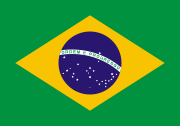 Brasil Open (Costa do Sauípe, Brazil)
Brasil Open (Costa do Sauípe, Brazil)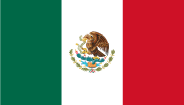 Abierto Mexicano Telcel (Acapulco, Mexico)
Abierto Mexicano Telcel (Acapulco, Mexico)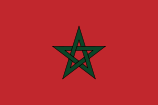 Grand Prix Hassan II (Casablanca, Morocco)
Grand Prix Hassan II (Casablanca, Morocco) Masters Series Monte Carlo (Monte Carlo, Monaco)
Masters Series Monte Carlo (Monte Carlo, Monaco)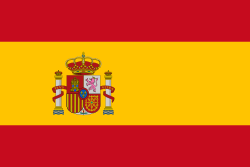 Torneo Godó (Barcelona, Spain)
Torneo Godó (Barcelona, Spain) Internazionali BNL d'Italia (Rome, Italy)
Internazionali BNL d'Italia (Rome, Italy)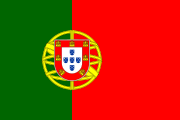 Estoril Open (Estoril, Portugal)
Estoril Open (Estoril, Portugal) BMW Open (Munich, Germany)
BMW Open (Munich, Germany)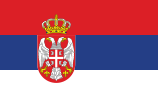 Serbia Open (Belgrade, Serbia)
Serbia Open (Belgrade, Serbia) Masters Series Madrid (Madrid, Spain)
Masters Series Madrid (Madrid, Spain) Nice Open (Nice, France)
Nice Open (Nice, France) World Team Cup (Düsseldorf, Germany)
World Team Cup (Düsseldorf, Germany) Swedish Open (Båstad, Sweden)
Swedish Open (Båstad, Sweden) Mercedes Cup (Stuttgart, Germany)
Mercedes Cup (Stuttgart, Germany) International German Open (Hamburg, Germany)
International German Open (Hamburg, Germany) Allianz Suisse Open (Gstaad, Switzerland)
Allianz Suisse Open (Gstaad, Switzerland)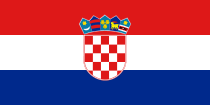 Croatia Open (Umag, Croatia)
Croatia Open (Umag, Croatia)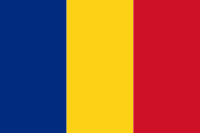 Open Romania (Bucharest, Romania)
Open Romania (Bucharest, Romania)
ATP (har-tru)
 U.S. Men's Clay Court Championships (Houston, USA)
U.S. Men's Clay Court Championships (Houston, USA)
WTA (green)
 Family Circle Cup (Charleston, USA)
Family Circle Cup (Charleston, USA) MPS Group Championships (Ponte Vedra Beach, USA)
MPS Group Championships (Ponte Vedra Beach, USA)
WTA (red)
 Copa Colsanitas (Bogotá, Colombia)
Copa Colsanitas (Bogotá, Colombia) Abierto Mexicano TELCEL (Acapulco, Mexico)
Abierto Mexicano TELCEL (Acapulco, Mexico) Andalucia Tennis Experience (Marbella, Spain)
Andalucia Tennis Experience (Marbella, Spain) Barcelona Ladies Open (Barcelona, Spain)
Barcelona Ladies Open (Barcelona, Spain) Porsche Tennis Grand Prix (Stuttgart, Germany)
Porsche Tennis Grand Prix (Stuttgart, Germany) Grand Prix SAR La Princesse Lalla Meryem (Fes, Morocco)
Grand Prix SAR La Princesse Lalla Meryem (Fes, Morocco) Internazionali BNL d'Italia (Rome, Italy)
Internazionali BNL d'Italia (Rome, Italy) Estoril Open (Estoril, Portugal)
Estoril Open (Estoril, Portugal) Madrid Masters (Madrid, Spain)
Madrid Masters (Madrid, Spain) Warsaw Open (Warsaw, Poland)
Warsaw Open (Warsaw, Poland) Internationaux de Strasbourg (Strasbourg, France)
Internationaux de Strasbourg (Strasbourg, France) GDF SUEZ Grand Prix (Budapest, Hungary)
GDF SUEZ Grand Prix (Budapest, Hungary) Swedish Open Women (Båstad, Sweden)
Swedish Open Women (Båstad, Sweden) Internazionali Femminili di Palermo (Palermo, Italy)
Internazionali Femminili di Palermo (Palermo, Italy) ECM Prague Open (Prague, Czech Republic)
ECM Prague Open (Prague, Czech Republic) Gastein Ladies (Bad Gastein, Austria)
Gastein Ladies (Bad Gastein, Austria)
See also
References
- ↑ ATP_World_Tour_records#Winning_Streaks_.28Open_Era.29